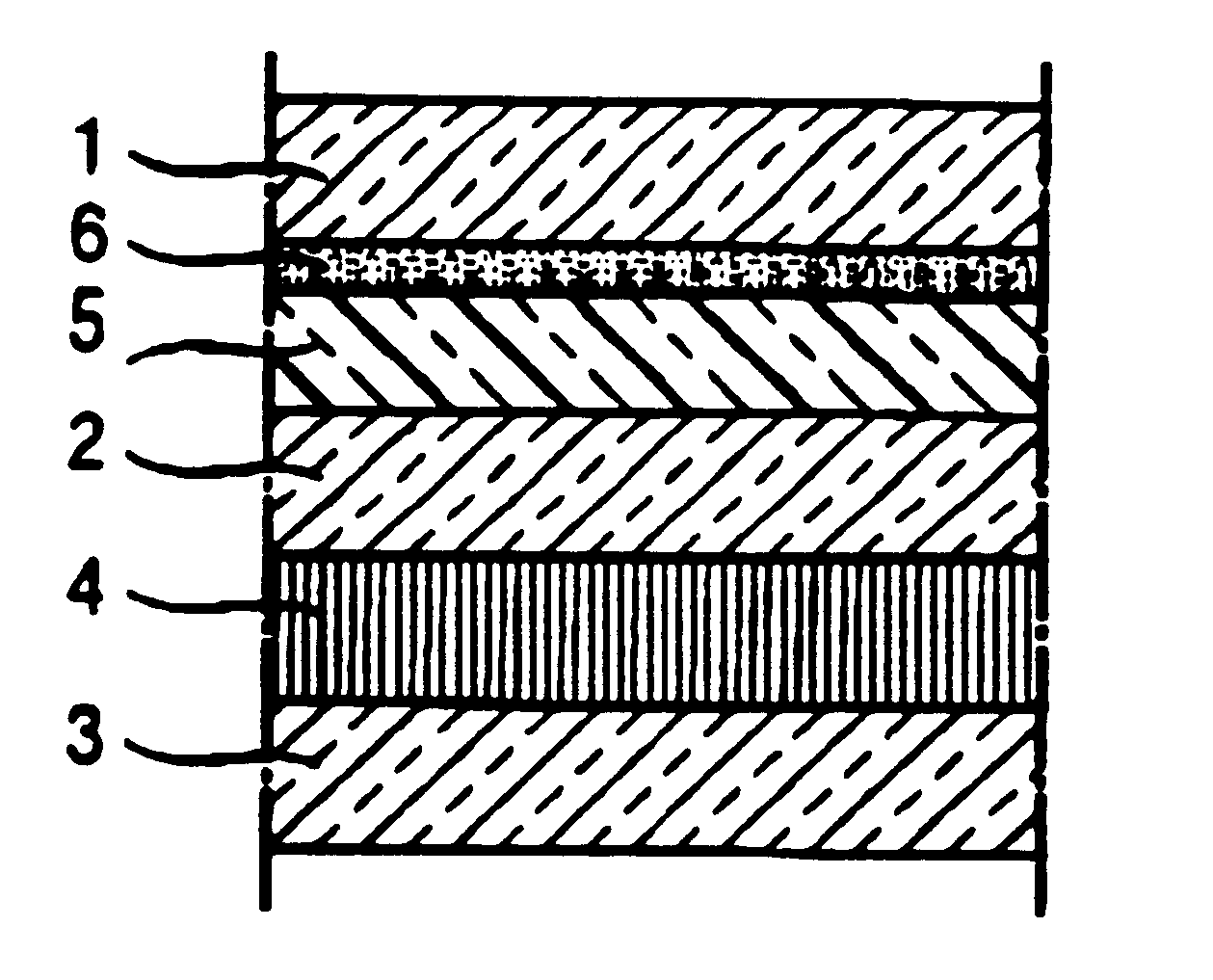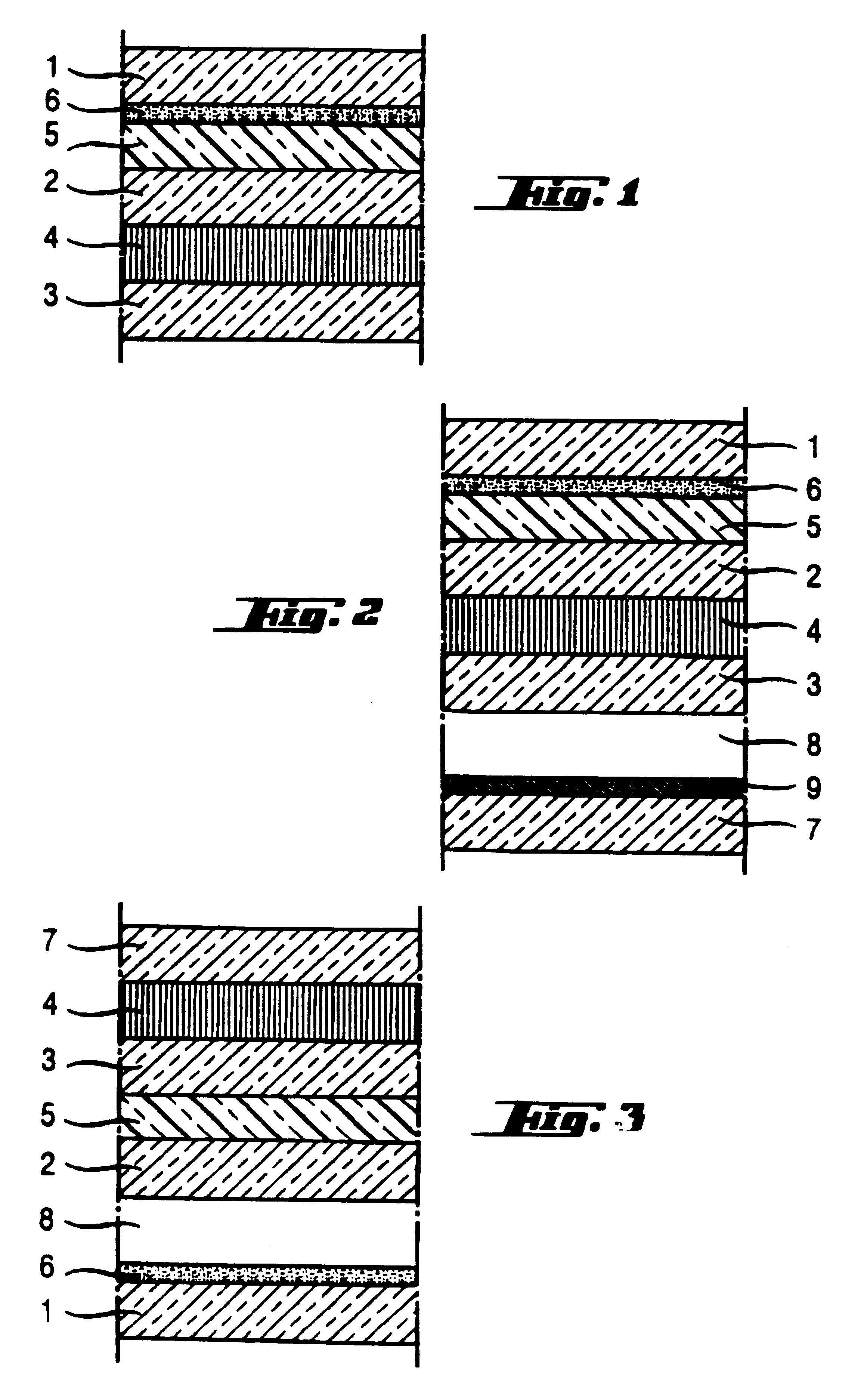Glazing with variable optical and/or energetic properties
a technology of energetic properties and variable optical properties, applied in the field of gla, can solve the problems of progressive irreversible degradation, shortening the lifetime of the glazing, and affecting the appearance of the building, so as to prolong the lifetime of the intelligent glazing, modulate the optical appearance, and improve the thermal performan
- Summary
- Abstract
- Description
- Claims
- Application Information
AI Technical Summary
Benefits of technology
Problems solved by technology
Method used
Image
Examples
example 1
FIG. 1 shows an electrochromic glazing of laminated structure containing three glasses in a configuration adapted, for example, to use as a car roof: two clear glasses 2, 3 are shown, between which is placed an electrochromic system 4 consisting of the stack of the following functional layers (stack in accordance with the teaching of EP-0 628 849, the contents of which are hereby incorporated by reference):
a 300 nm first electroconducive layer of SnO.sub.2 :F,
a 55 nm first layer of anodic electrochromic material made of hydrated iridium oxide (it could preferably be replaced with a layer of hydrated nickel oxide).
a 70 nm layer of hydrated tantalum oxide (Ta.sub.2 O.sub.5.H.sub.x), its function being protection.
a layer of electrolyte as solid solution of polyethylene oxide with phosphoric acid (PEO--H.sub.3 PO.sub.4), of 100 micrometers,
a 350 nm second layer of cathodic electrochromic material based on tungsten oxide,
a 300 nm second layer of SnO.sub.2 :F.
The glass 2+electrochromic sy...
example 2
Example 2 corresponds to the electrochromic glazing configuration shown in FIG. 2: the glasses 1, 2, 3 of FIG. 1 are seen again, as is the name PVB sheet 5, the same reflecting coating 6 and the same electrochromic system 4. The three-glass unit has been fitted as double glazing with the aid of a fourth clear glass 7 through the intermediacy of a layer of argon 8, 12 mm in thickness, with the aid of means of assembly which are known in the field of double glazing and are not shown.
On the face of the glass 7 facing the argon layer 8 is placed a coating 9 with low-emissivity properties, of the type of those applied to the glazings marketed under the name of Planitherm by Saint-Gobain Vitrage, that is the following stack:
a 40 nm layer of tin oxide,
a 9 nm layer of silver,
a 40 nm layer of tin oxide, together with, as in the case of the stack 6 described above, the presence of two thin layers of 0.5 to 1.5 nm of Ni--Cr, intended to protect the silver from oxidation. This type of double gl...
example 3
Example 3 corresponds to the configuration of FIG. 3, which shows an electrochromic double glazing which has the same components (but is devoid of the low-emissive stack 9) as that in FIG. 2, assembled differently.
Glass 1, which faces outwards once the glazing is fitted, carries only the reflecting coating 6 and is not laminated. The electrochromic system 4 is therefore between the glasses 7 and 3, the glass 3 being laminated to glass 2 through the intermediacy of the PVB sheet 5. The unit of the glasses 2, 3 and 7 is next fitted as double glazing via an argon layer 8 with the glass 1 carrying the reflecting coating 6 on its face facing the argon layer.
Many other alternative forms of electrochromic glazings in accordance with the invention are possible, as already mentioned above. It is thus possible to have the configuration of Example 3, but eliminating the glass 2 and the PVB sheet 5, thus avoiding laminating glass 3.
If an "all-solid" electrochromic system 4 is adopted, for examp...
PUM
| Property | Measurement | Unit |
|---|---|---|
| temperatures | aaaaa | aaaaa |
| surface temperature | aaaaa | aaaaa |
| thickness | aaaaa | aaaaa |
Abstract
Description
Claims
Application Information
 Login to View More
Login to View More - R&D
- Intellectual Property
- Life Sciences
- Materials
- Tech Scout
- Unparalleled Data Quality
- Higher Quality Content
- 60% Fewer Hallucinations
Browse by: Latest US Patents, China's latest patents, Technical Efficacy Thesaurus, Application Domain, Technology Topic, Popular Technical Reports.
© 2025 PatSnap. All rights reserved.Legal|Privacy policy|Modern Slavery Act Transparency Statement|Sitemap|About US| Contact US: help@patsnap.com



